|
85. Hipparchia fagi (Scopuli, 1763) / Woodland grayling / Nymphalidae – Satyrinae
NL: grote boswachter / D: Groβer Waldportier / F: sylvandre
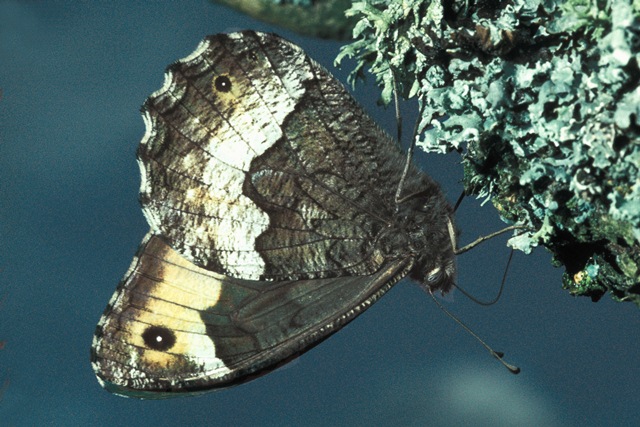 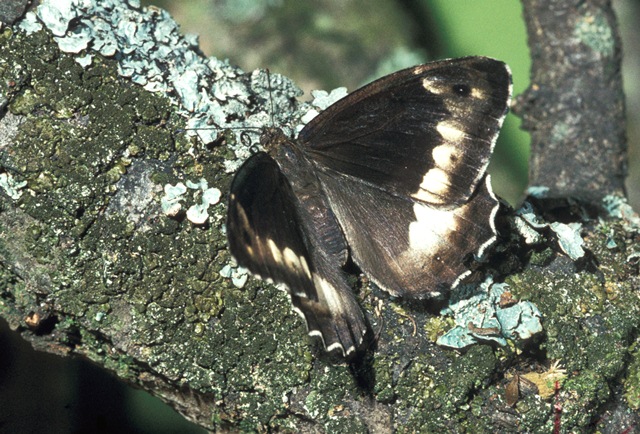 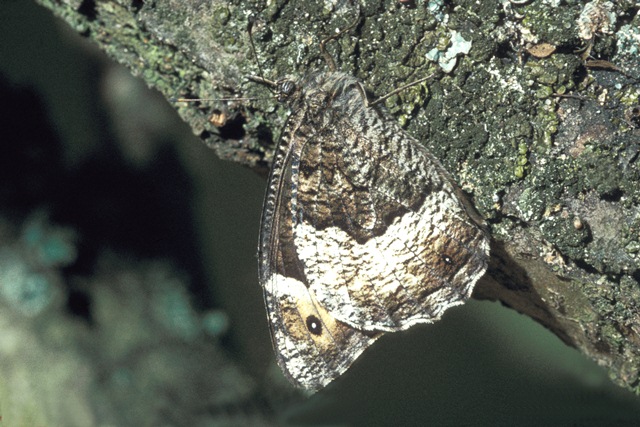
Photographs: Frits Bink ©.
Large, wing length 31 (29-33) mm. Occurs in the Benelux as a stray in Luxemburg and Wallonia. Recorded from the Netherlands only once, in 1901. In the nearby Vosges it inhabits edges of copses in chalk grassland where there is also some grazing by cattle.
Butterfly is on the wing from end-June until early-September, peaks end-July.
The species is known from sub-continental to mild continental climates, amplitude 7 to 17. Required heat sum 900°d and maximum tolerated 1800°d, corresponding climate windows 26 and 35 weeks.
The species Hipparchia fagi is an inhabitant of woodland and wood edges, whereas the very similar species H. alcyone and H. genava prefer open, rocky landscapes.
H. fagi survives during long periods of bad weather by sheltering in hollow tree trunks. An important element of its habitat is the presence of tree trunks exposed to the sun, bordering its territory.
Ecological characteristics
Behaviour over time
Overwintering: half grown larva in third instar, 9-10 mm in length, hidden in tussock of its host-plant.
Reproduction: oviposition starts after 12-18 days when the body contains 50 (41-49) eggs, estimated production 2.8 times as much.
Larval feeding periods: summer 40 (28-53) days in period from end-August until early-October, next spring 110 (92-132) days from end-March until end-June.
Generations: one.
Spreading of risk: not observed.
Life cycle: egg about 13 days; larva 39-43 weeks; pupa 37 (34-40) days.
Life span of adult: long, up to 5 weeks.
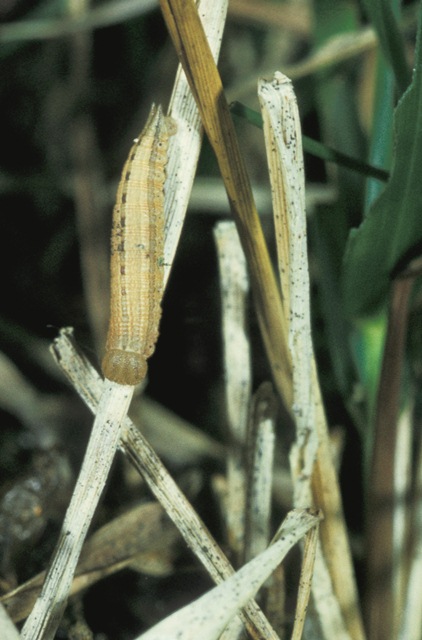 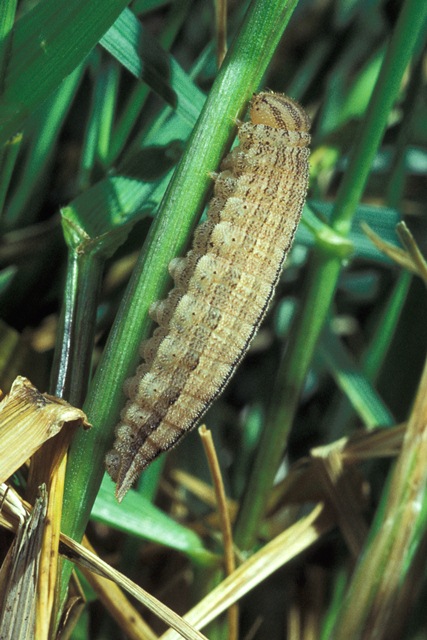
Photographs: Frits Bink ©.
Behaviour in space
From stay-at-home to migrant: stay-at-home, spatial requirement modest.
Finding a mate: male perches and patrols.
Orientation in the landscape: edge of wood or open forest, also neglected orchards.
Oviposition: eggs on the stems of tall grass.
Defence
Threats from other organisms: avoids predation risk by concealment in larval and adult stages and pupating in the soil.
Threats from the environment: over-grazing of the grass vegetation and closing of the canopy of the wood.
Feeding habits
Adult: juice of wounded trees and rotten fruit.
Larva: basks early in the spring, moves around in summer.
Larval foodplants
Plant species: Poaceae, e.g. Brachypodium pinnatum, Bromopsis erecta, Festuca arundinacea, F. rubra. In rearing experiment also accepted Deschampsia cespitosa, Melica nutans (preferred).
Journal
Rearing experiment based on specimen from Bollenberg, Vosges, France:
25 July 1983: female captured.
4 August some eggs became dark in colour.
9 August: all eggs had hatched.
28 August: all larvae had begun feeding.
25 September: biggest larva third instar.
Overwintered outdoors.
5 February 1984: pots taken indoors, larvae were all of the same length, 12 mm, and some were already active.
14 February: a quarter of the larvae had moulted.
23 February: larvae end fourth instar, 18 mm in length.
15 March: one larva in moult.
20 March: one larva in last instar, 30 mm in length and active at night.
10 April: 11 larvae near to pupation (sandy soil available for pupation).
23 April: biggest larva 40 mm in length.
14 May: first pupa seen.
22 May: a few larvae still feeding, also traces of digging seen. Larvae 40 mm in length.
26 May: three fresh pupae, all males, five prepupae and about 15 larvae still feeding in the grass tussock.
18 June: last larva pupated.
23 June: first adult appeared, male.
8 July: first female appeared.
20 July: one female hid in a hole in the tree trunk and stayed there for 6 days during a spell of cold weather.
26 July: oldest female had laid 27 eggs (preoviposition period 16 days!).
Larval food-plant preference experiments:
1. 23 April: Sesleria caerulea and Melica nutans offered: from the former only flower heads were eaten, whereas Melica was eaten down to the ground.
2. 3 May: Deschampsia cespitosa and Molinia caerulea accepted, Arrhenatherum elatius refused.
Table 85-1. Results of dissections

Table 85-2. Collection and observation localities
F, Aurel, 400 m, 44° 43’N – 5° 16’E; 29 August 1984, 2 September 1984.
F, Vosges, Bollenberg, 363 m, 47° 56’ 54”N – 7° 15’21”E; 25 July 1983, 11 June 1984.
F, Vosges, le Zinnkoepfle, 481 m, 47° 57’ 56”N – 7° 15’ 08”E; 10 July 1984, 22 August 1984.
Fig. 85-1. Hipparchia fagi, phenogram adapted from Ebert & Rennwald 1991b: 15.
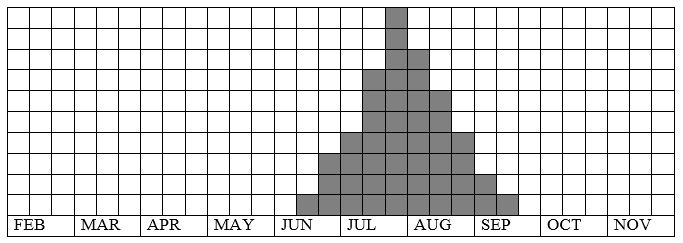
Fig. 85-2. Hipparchia fagi, habitat characteristics.
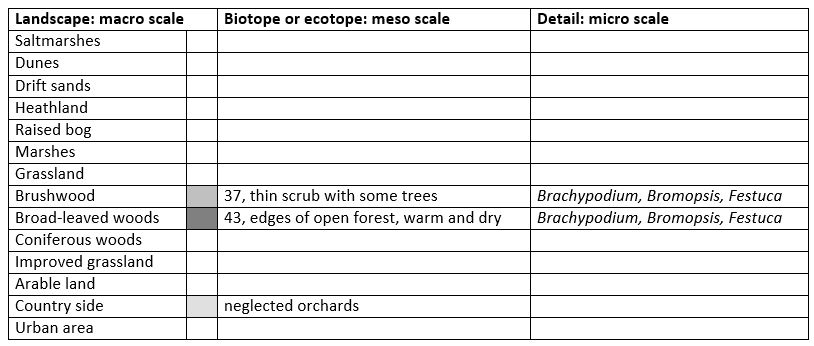
Fig. 85-3. Hipparchia fagi, climate matrix, heat-sums 900 - 1800°d.
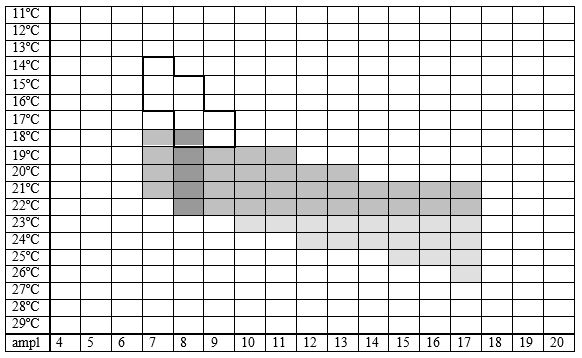
|










